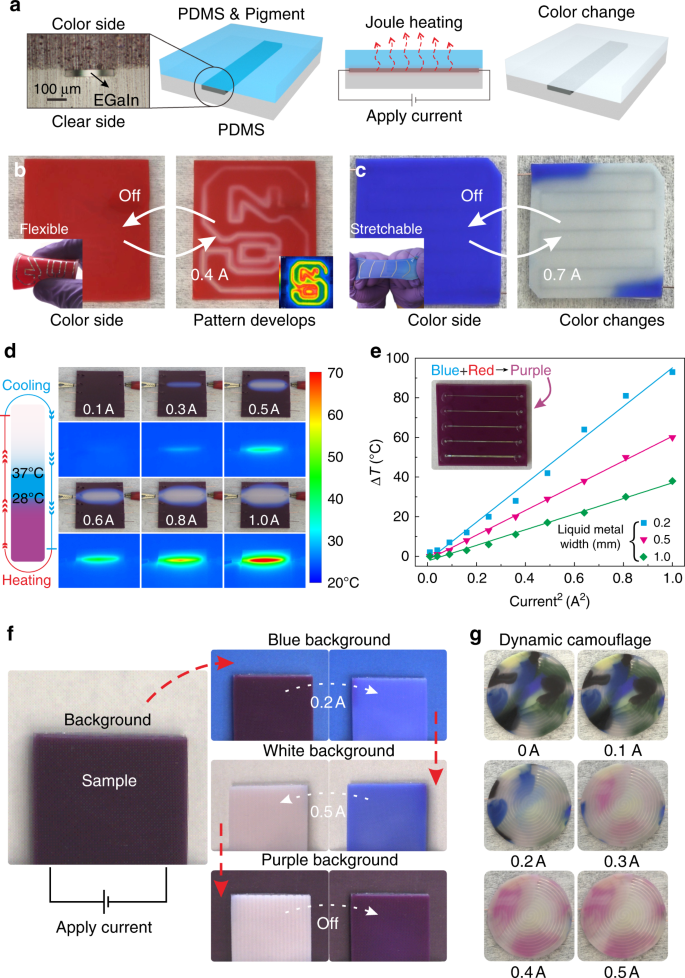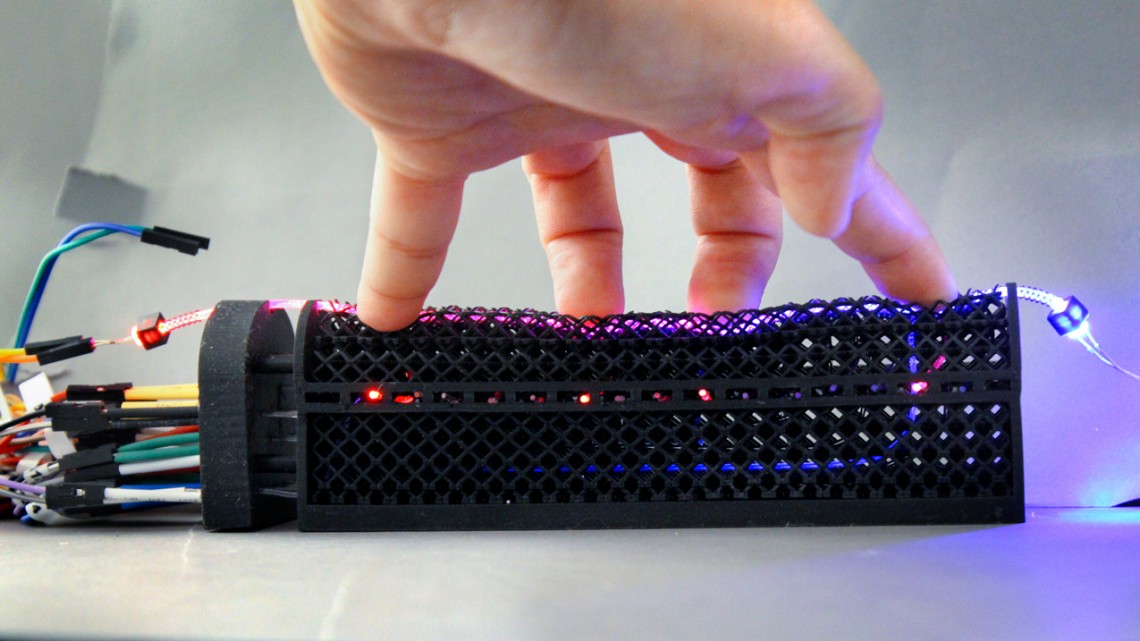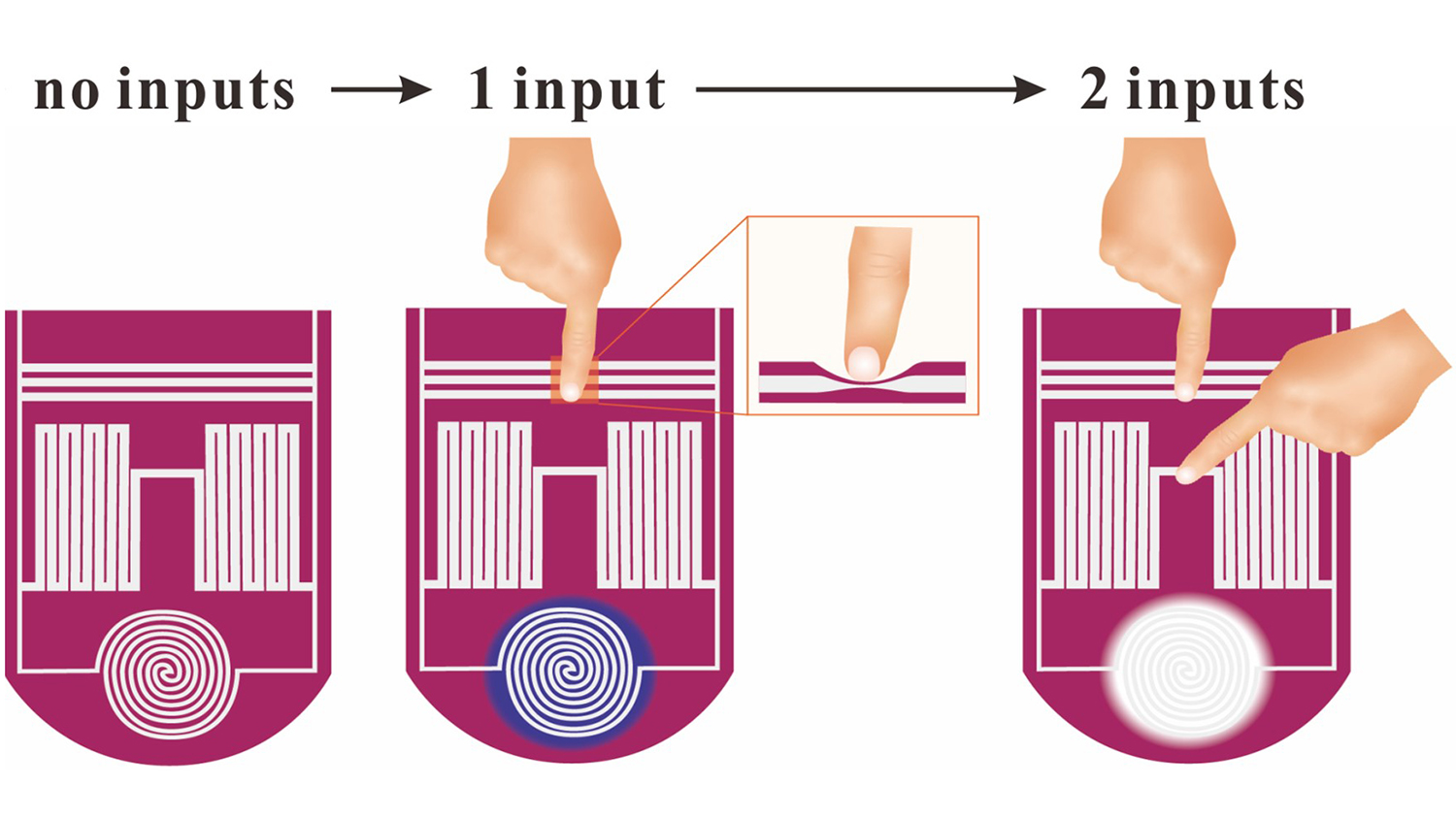( Metamaterial Morphs Into New Shapes, Taking on New Properties)
2019/9/11 アメリカ合衆国カリフォルニア工科大学 (Caltech)

・ Caltech、ジョージア工科大学(Georgia Tech)およびスイス・チューリッヒ工科大学(ETH) Zurich が共同で、微調整して形状を変える、階層構造のメタ材料を開発。
・ リコンフィギュラブル(再構築可能)な材料の多くでは、外部からの刺激によりある状態から別の状態に変化してそれを維持するが、新材料は電気化学的な反応により物理的特性を微調整して任意の形状を作ることができる。次世代エネルギー貯蔵やインプラントできるマイクロバイオデバイス等のアプリケーションが可能。
・ 同新材料は、規則的な格子や非規則的な自由な形体へと、高度な階層構造に配置できるマイクロ・ナノスケールのビルディング・ブロックから構成される。シリコン-リチウムの合金化反応で形状を変化させ、微調整してあらゆる形状変化の状態を作れる。刺激が途切れても形成した状態を維持し、元の状態に容易に戻すこともできる。
・ 吹き込んだ息の分で大きさを調節できる風船のように、形状の変化は少量の電流による化学反応では微小、大量の電流では大きくなり、電流を停止した際の形状を保持する。あらゆる材料で不可避な欠陥を有効に活用し、電気化学的な刺激に反応して出現する特定のパターンをプログラムした。
・ 超高解像度の 3D プリンティングプロセスである二光子フォトグラフィーにより、シリコンコーティングした格子構造を作製。この製造方法により、材料システムへの欠陥の事前の仕込みが可能に。同格子構造を構成するマイクロスケールの直線のビーム(梁)が電気化学的な刺激により曲がることで、ユニークな機械的・振動特性を呈する。同材料システムの試験では、同材料のシートを作製し、電気的制御で Caltech のアイコンを表示させることに成功。
・ エネルギーを蓄えると膨張するバッテリー材料は、膨張と収縮を繰り返すことで機械的に劣化する。そのため、形状変化を微細に調整できる材料は、バッテリーの超軽量化、長寿命化や安全性の向上を実現するエネルギー貯蔵システムとしての可能性が期待できる。
・ 形状の構造的変化の設計が可能な電気化学的に活性なメタ材料は、高容量と新機能を備えた次世代スマート開発の道筋を提供する。Georgia Tech では、電気的、化学的、機械的な側面が複雑に組み合う挙動を予測する計算ツールを開発している。
・ 本研究には、Greer’s Vannevar-Bush Faculty Fellowship、Kochmann’s Office of Naval Research grant および Di Leo の米国科学財団(NSF)の CMMI grant が資金を提供した。
URL: https://www.caltech.edu/about/news/new-metamaterial-morphs-new-shapes-taking-newproperties
(関連情報)
Nature 掲載論文(アブストラクトのみ:全文は有料)
Electrochemically reconfigurable architected materials
URL: https://www.nature.com/articles/s41586-019-1538-z
<NEDO海外技術情報より>
Abstract
Architected materials can actively respond to external stimuli—such as mechanical forces, hydration and magnetic fields—by changing their geometries and thereby achieve novel functionalities. Such transformations are usually binary and volatile because they toggle between ‘on’ and ‘off’ states and require persistent external stimuli. Here we develop three-dimensional silicon-coated tetragonal microlattices that transform into sinusoidal patterns via cooperative beam buckling in response to an electrochemically driven silicon-lithium alloying reaction. In situ microscopy reveals a controllable, non-volatile and reversible structural transformation that forms multiple ordered buckling domains separated by distorted domain boundaries. We investigate the mechanical dynamics of individual buckling beams, cooperative coupling among neighbouring beams, and lithiation-rate-dependent distributions of domain sizes through chemo-mechanical modelling and statistical mechanics analysis. Our results highlight the critical role of defects and energy fluctuations in the dynamic response of architected materials. We further demonstrate that domain boundaries can be programmed to form particular patterns by pre-designing artificial defects, and that a variety of reconfigurational degrees of freedom can be achieved through micro-architecture design. This framework enables the design, fabrication, modelling, behaviour prediction and programming of electrochemically reconfigurable architected materials, and could open the way to beyond-intercalation battery electrodes, tunable phononic crystals and bio-implantable devices.



